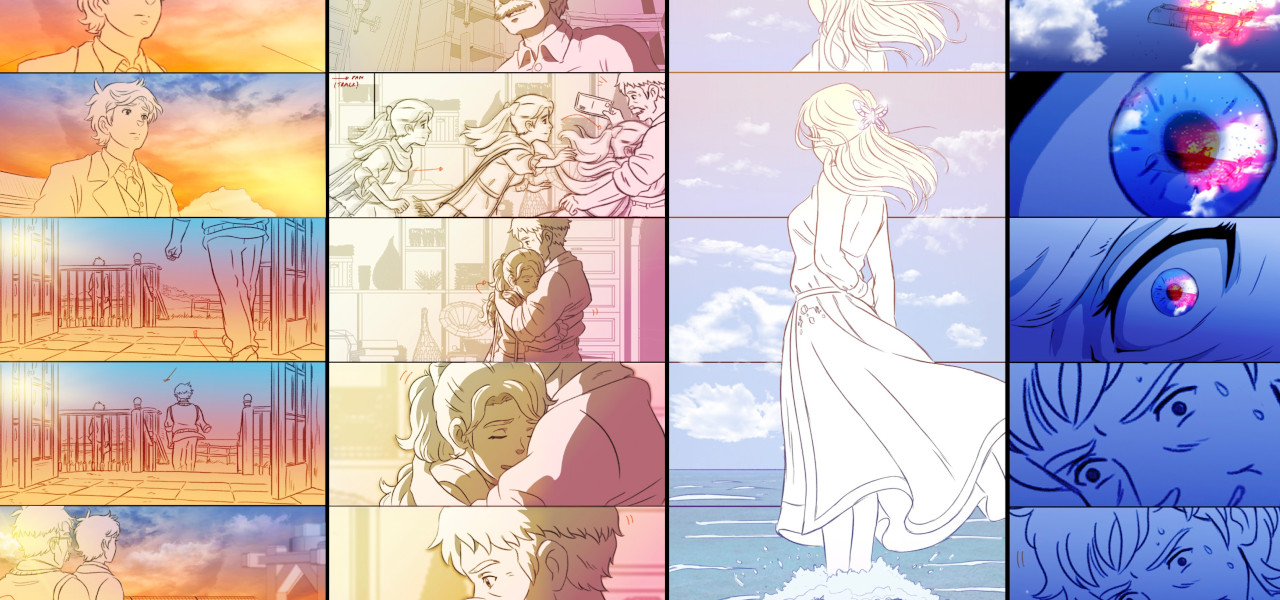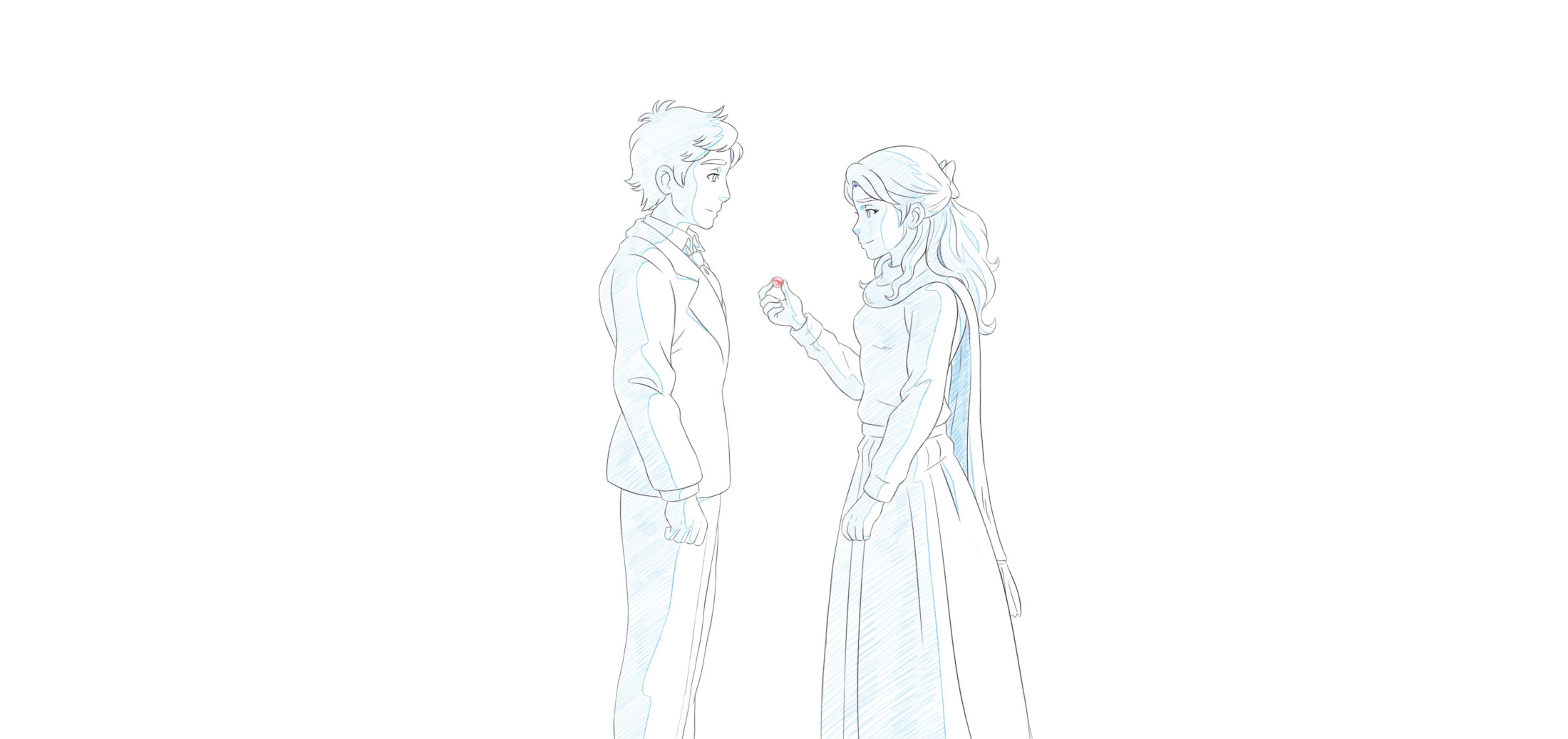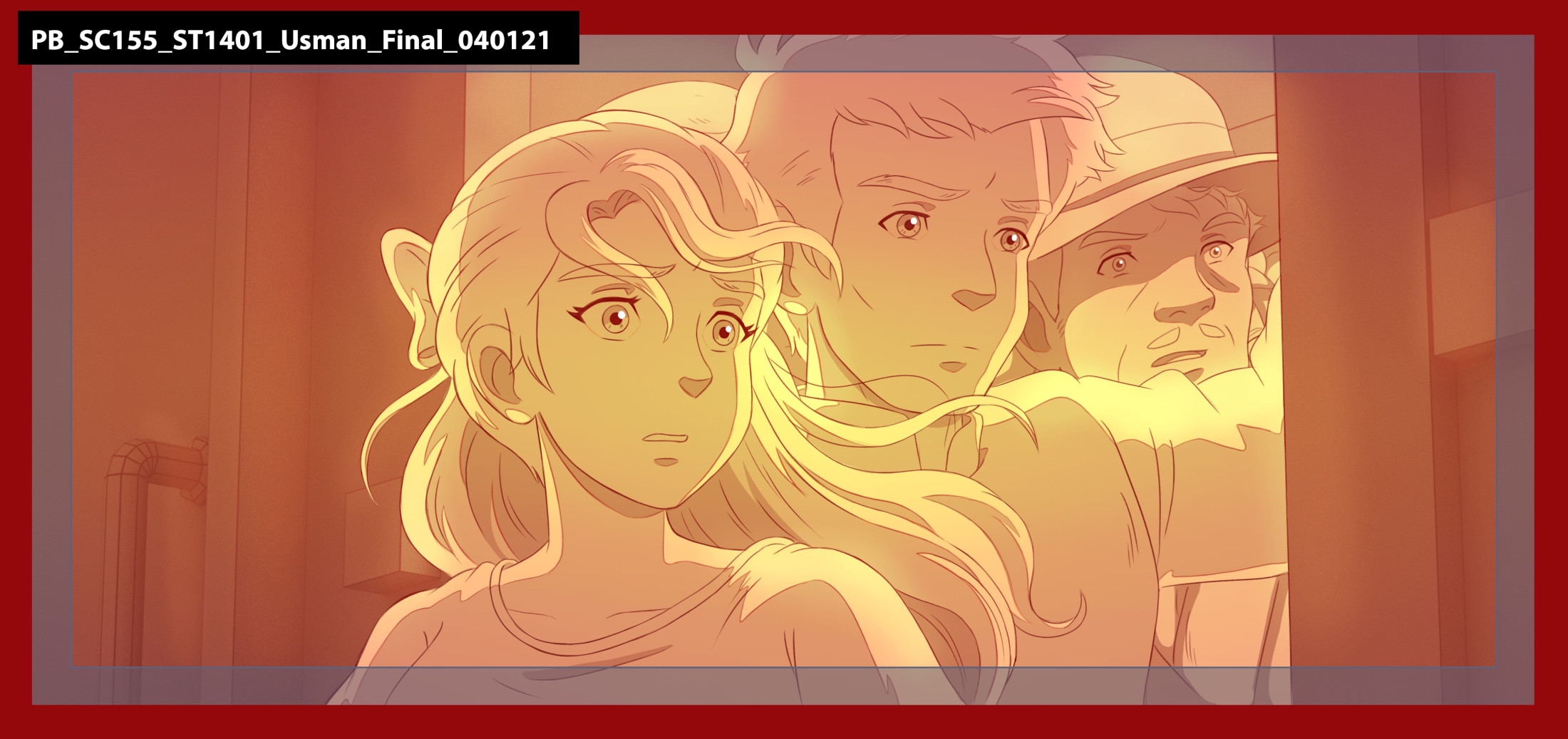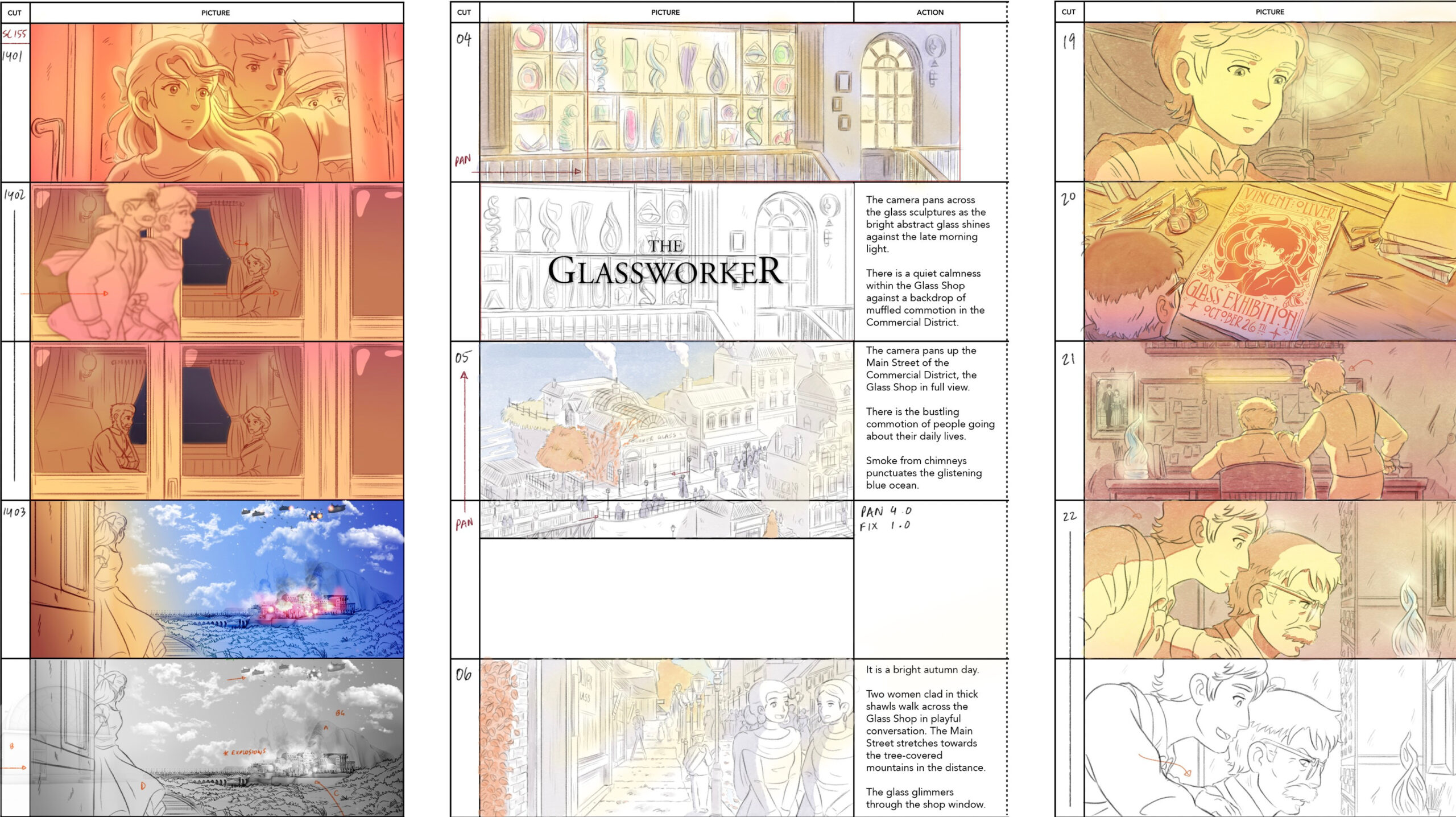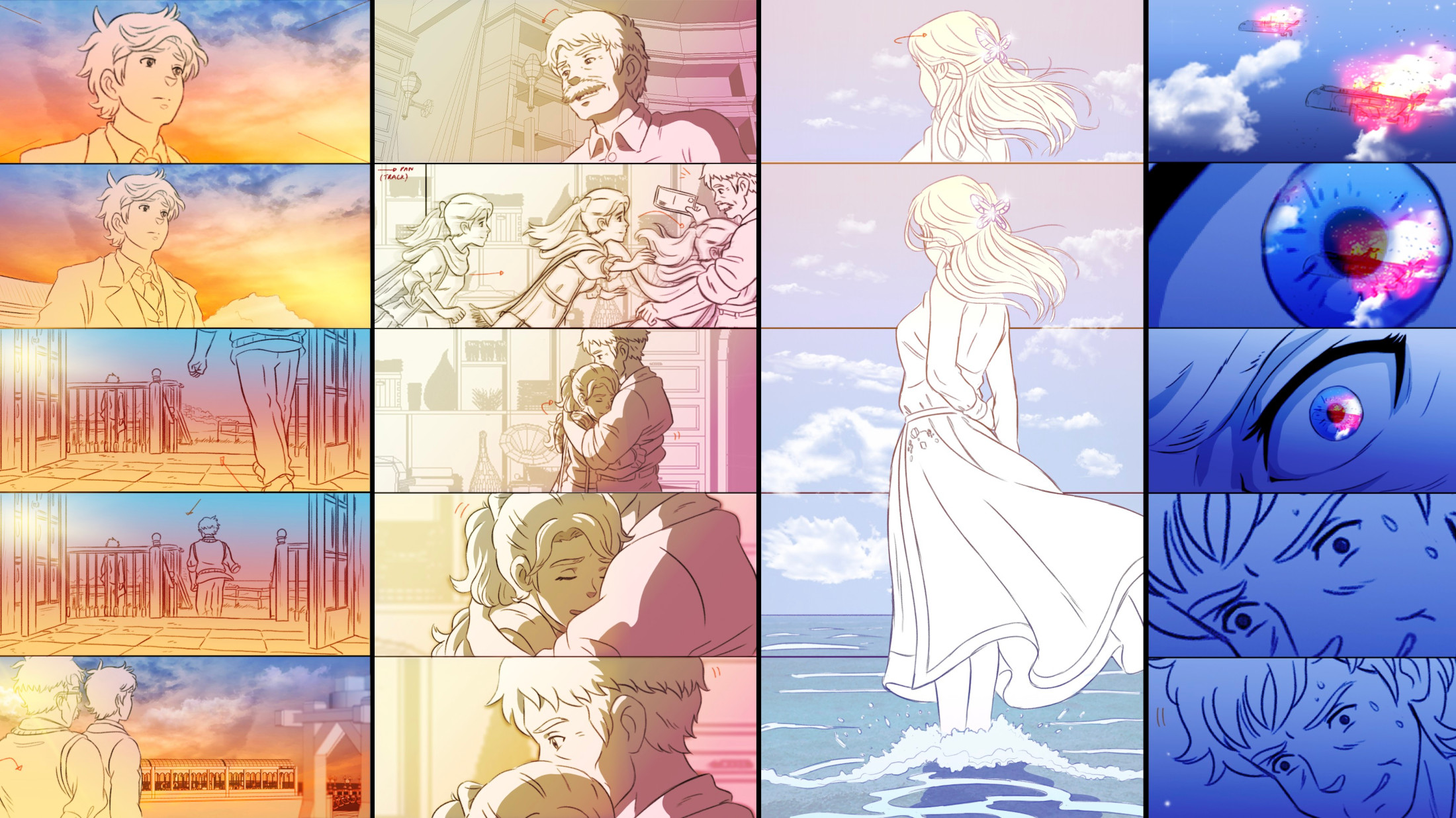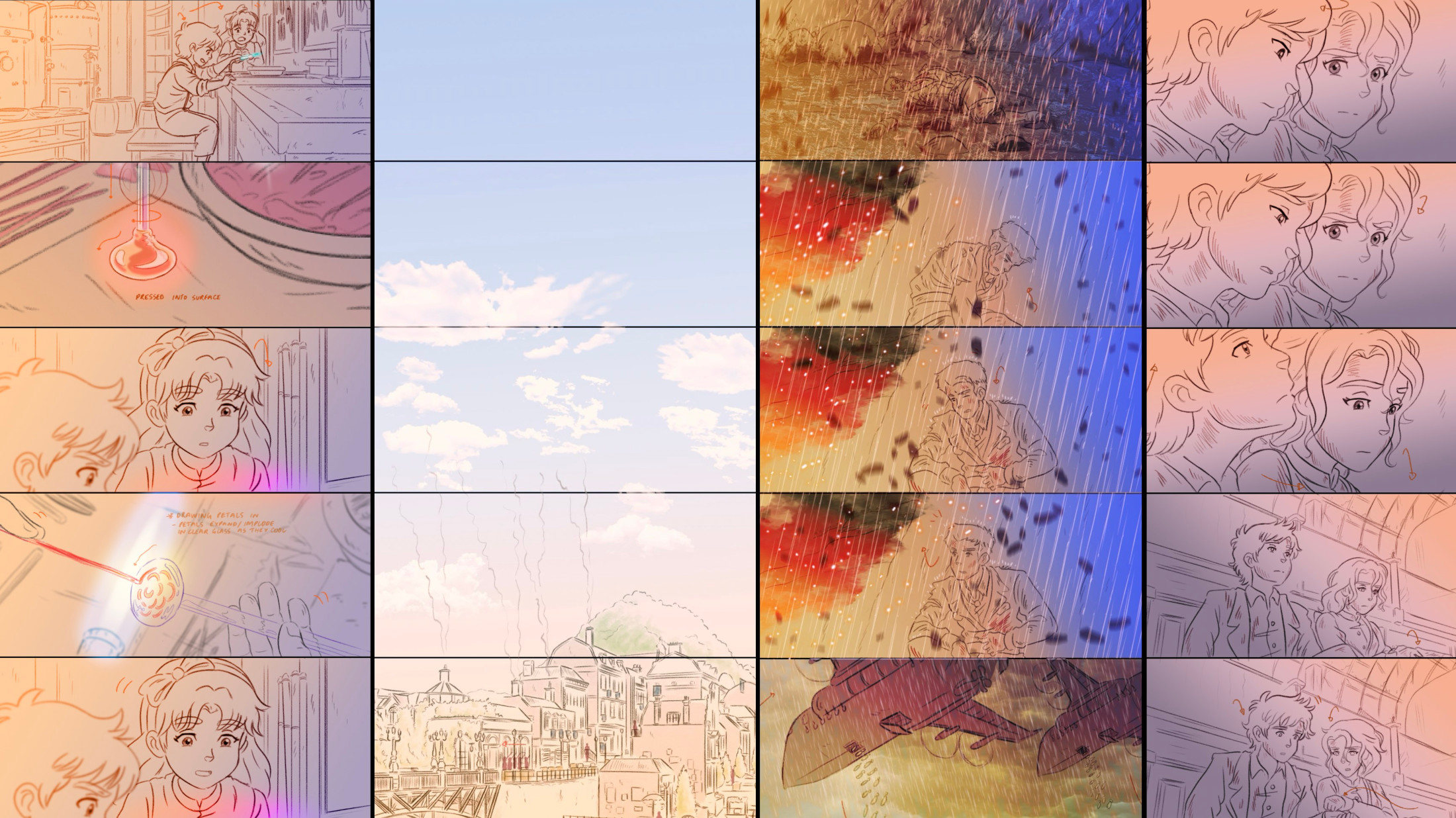Hand-drawn with extraordinary care and more than a decade in the making, Pakistan’s international feature Oscar submission and its first-ever hand-drawn animated feature, The Glassworker, begins its North American theatrical run today.
Directed by Usman Riaz and produced by Mano Animation Studios, the film tells the story of Vincent, a young glassblower’s apprentice, and Alliz, the daughter of an army officer, whose lives intertwine against the backdrop of war and shifting loyalties. With its Ghibli-esque style and sweeping narrative arc, the film pays homage to the traditions of hand-drawn animation while carving out a place in animation history that’s all its own.
Below, Riaz offers a glimpse into the creative process that shaped The Glassworker. From carefully crafted character-building moments to sweeping wartime sequences, each piece reveals the deliberate choices behind the film’s mood, pacing, and emotional core.
Usman Riaz: This was one of the image boards, towards the end of the film, where Vincent gives Alliz the whimsy that he made. A whimsy is just a small glass sculpture that glass blowers make to practice… He made her a small rose, and he finally gets to give it to her at the end of the film. I liked this drawing so much that we used it as the second poster for the film… You see both the characters, you see their relationship, so that’s why that image is special to me.
Usman Riaz: This is another production board I drew. In it, I wanted to capture that sense of anxiety and worry in Alliz’s expression. This is one of the times where I felt like I really did capture exactly what I wanted the character to look like, and hopefully to make the audience feel what she’s feeling. I like this one enough that I used it for the floating heads poster we made for the film.
Usman Riaz: I drew all the storyboards for the film myself… I had to draw more detailed storyboards than usual because I wanted nothing to be left to chance. These are a few of the beginning acts of the film where we’re establishing the mood, the tone, the world. The storyboarding process was the most fun I had in this entire production. I’m also a composer, a musician, and the animation process, especially with the timing charts and the storyboarding, reminded me of sheet music. It reminds me of Mozart. Certainly, when Miyazaki sits and draws a storyboard, it’s like watching Mozart compose all of his incredible music in the film Amadeus. On the musical side, when you’re writing the sheet music for an orchestral score, it’s horizontal to follow the melody, but it’s also vertical in terms of all the chord formations and things that are happening with the other instruments to support that main melody. The storyboarding process really reminded me of that… pacing, spacing, and flow. Just like when you’re animating a shot, I treated the storyboards very much like that, like a piece of music.
Usman Riaz: I cobbled these storyboard images together to show all the various stages of the process for several shots and to show that I also painted and colored them. That gave the art direction the exact direction I wanted to go. When we got to the animatic, it almost felt like a roughly animated version of the movie rather than just stick figures put together.
Usman Riaz: The war sequence was complicated because it was very, very intense animation, and I didn’t want to skim down on the details… I said, “Okay, I’m going to try to put this entire war sequence in 30–31 shots.” Sometimes, in an animated film or series, you can see which sequences got more attention, and I didn’t want that. It was important to me to maintain a visual continuity throughout the film. Narratively, it also worked extremely well because… we just show a glimpse of the war to show how devastating it was and then move back into the real-world consequences off the battlefield.
